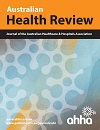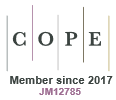What is known about the topic? With health care experiencing workforce shortages, allied health assistants are vital for supporting allied health professionals and contributing to workforce sustainability. What does this paper add? Strategic governance of allied health assistant workforces needs to be prioritised to ensure they are included in workforce planning. What are the implications for practitioners? There remains an absence of overarching governance frameworks for allied health assistants, whichneeds to be prioritised by all Australian states and territories, and by national strategies, to ensure we can sustain our allied health workforce into the future.
AH25081 Abstract | AH25081 Full Text | AH25081PDF (296 KB) Open Access Article





